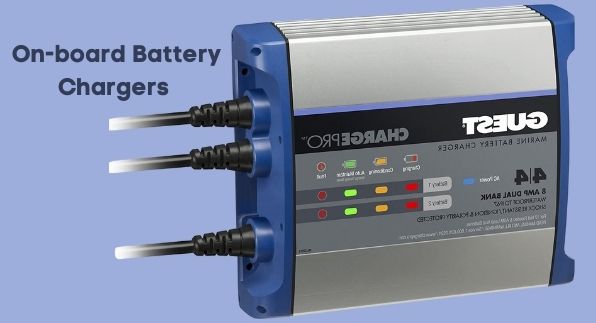The essence of an onboard battery charger is to convert the AC power coming from an external source into a DC, which is then used to charge the battery in your vehicle. It would help if you chose an onboard battery charger that has a rated output for better conversion. One must match the charger purchased with the number of batteries to ensure maximum output while recharging.
How long do I leave my On-board Battery Charger Plugged in?
Most of the onboard battery chargers are designed to restore voltage and at the same time protect the entire charging system. In this regard, leaving the charger plugged in will maintain the battery voltage without damaging your batteries. The charger will no longer output power through the float mode but will rather monitor the battery voltage. Once the voltage drops, the charger will automatically reset to charging mode and boost the voltage.
Hooking up the Battery Charger
Connecting the onboard charger to the battery will be easy by simply following the following steps. What is important is to align the terminals to ensure power flows when the charger is switched on. These steps will facilitate successful hook up of your battery charger:
- Start by switching off the charger.
- Align the positive cable to the positive terminal on the battery. Do the same for the negative cable and link it to the negative terminal of the battery.
- Once that is done, set your charger to its slowest charge rate.
- Finally, turn the charger on and then set the timer for charging.
Time is taken to charge your car battery fully
The time taken by the onboard charger to fully restore your battery voltage is dependent on the charge rate, the cold-cranking amps, and the open-circuit voltage. If the charge rate is 5 amp and your battery voltage is below 11.85, your car battery will be fully charged in 12 hours with the cold-cranking amps ranging from 400 to 500.
The same battery will be charged in half the time when the charge rate is doubled. To put it into perspective, the lower the charge rate, voltage, and the more cold-cranking amps, the longer it will take you to charge the car battery.
Do and Don’t when Mounting an Onboard Battery Charger
Where you decide to mount the onboard battery charger system will determine its effectiveness and its lifespan. Choose a location closer to the batteries for your onboard charger. The wire runs from the charger need to be kept short, and the gauge used must be the right one else; you risk having a voltage drop. However, avoid installing the charger directly above the batteries. This is because the escaping gas may damage the charger and compromise its functionality.
Read: Best trolling motor battery
Conclusion
Onboard battery chargers work well for car and boat batteries as long as the mounting is done right and the right cables are used. These onboard systems are safe for your batteries since they do not damage even when left plugged in for a long time.





